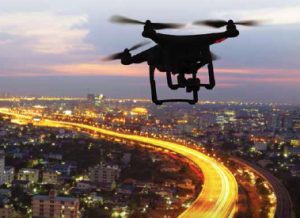
There is no question that new and emerging technologies like unmanned aircraft systems (UAS or drones), facial recognition, artificial intelligence, body-worn cameras, and automatic license plate readers, among others, play an increasingly crucial role in the daily work of police, equipping officers with enforcement and investigative tools that have the potential of making them safer, better informed, and more effective and efficient. In a time when law enforcement agencies are typically operating with a reduced force and agencies are asking their officers to respond to an ever-expanding variety of calls for service, the use of technology has become essential.
That being said, technologies are useless, and perhaps even harmful, if they are improperly implemented and deployed. The potential benefits that a particular technology can bring to law enforcement agencies and their communities can only be achieved through proper planning, implementation, training, deployment, use, and management of the technology and the information it provides. Like all resources and tools available to law enforcement, new technologies must be carefully considered and managed. Agencies must clearly articulate their strategic goals for a technology, and these goals should be aligned with the broader strategic plans of the agency and safety needs of the public.
Law enforcement agencies should create and enforce comprehensive policies governing the deployment and use of new technologies, as well as the data they provide, in order to be successful in applying the technologies. Prior to the use of any technology, agencies need to have policies in place that govern the deployment and use of the technology. Thorough and ongoing training is required to ensure that the technology performs effectively and that users are well versed in the operational policies and procedures defined and enforced by the agency.
Moreover, the policies must address how the agency will protect the civil rights and civil liberties of individuals, as well as recognize and respect the privacy protections regarding the data collected, stored, and used. The development and enforcement of these policies is essential to effective and sustainable implementation and to maintaining community trust. This is why the IACP took the lead in developing a technology policy framework to identify universal principals that can be used as a guide to all law enforcement agencies as they develop effective policies for the use of technologies.
 While technology has proven to be a useful tool for law enforcement, we must remember that technology can both facilitate and inhibit the building of community bonds. Yes, technology can make us work faster and even smarter, but we must not lose sight of one of the key principals of policing— community engagement and the human element.
While technology has proven to be a useful tool for law enforcement, we must remember that technology can both facilitate and inhibit the building of community bonds. Yes, technology can make us work faster and even smarter, but we must not lose sight of one of the key principals of policing— community engagement and the human element.
I always find value in picking up the phone to call someone rather than sending a text or email. The same goes for policing—as technology continues to advance, it should be seen as a tool to help support police officers in making informed decisions, but it should not be relied upon solely nor replace the human element of policing.
I hope that, as police leaders, you will work to establish strong policies around the use of technology, provide ongoing training to your officers, and work in conjunction with your communities to make them aware of and educate them on the benefits of technology. Stay safe.
Please cite as:
Paul M. Cell, “The Role of Policy in the Use of New Technologies,” President’s Message, Police Chief 86, no. 4 (April 2019): 5–6.


